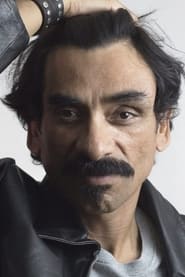
Ask Your Own Question
What is the plot?
What is the ending?
In the ending of "Vladimir In Me," the protagonist, a young woman named Anna, confronts her inner demons and the haunting presence of her deceased father, Vladimir. After a series of emotional revelations and confrontations, Anna finds a sense of closure and acceptance, leading her to embrace her own identity and future.
As the film approaches its climax, Anna stands in her childhood home, the walls echoing with memories of her father. The atmosphere is thick with tension as she grapples with her feelings of loss and abandonment. In a pivotal moment, she discovers a hidden letter from Vladimir, revealing his struggles and regrets. This letter serves as a catalyst for Anna, prompting her to confront the unresolved issues that have plagued her since his death.
In the final scenes, Anna visits her father's grave, where she lays the letter down, symbolizing her release of the burdens she has carried. The camera captures her face, a mixture of sorrow and relief, as she finally lets go of the past. The film closes with Anna walking away from the grave, a newfound determination in her stride, suggesting that she is ready to move forward with her life.
Now, let's delve into the ending in a more detailed, chronological narrative.
As the film nears its conclusion, Anna finds herself back in her childhood home, a place filled with echoes of her past. The camera pans across the dimly lit rooms, revealing remnants of her father's presence--old photographs, dusty furniture, and the lingering scent of his cologne. Each item serves as a reminder of the man she lost and the unresolved feelings that have haunted her.
In a moment of introspection, Anna discovers a hidden compartment in her father's desk. Inside, she finds a letter addressed to her, written in her father's familiar handwriting. The letter is filled with his thoughts, regrets, and an apology for not being the father she needed. As she reads, tears stream down her face, and the weight of her grief begins to lift. The words resonate deeply, allowing her to see her father not just as a figure of loss but as a flawed human being who struggled with his own demons.
The scene shifts to Anna standing in front of her father's grave, the sun setting behind her, casting a warm glow over the landscape. The atmosphere is serene yet heavy with emotion. She clutches the letter tightly, her heart racing as she approaches the headstone. The camera captures her trembling hands as she places the letter on the grave, a symbolic gesture of forgiveness and release.
In this moment, Anna's internal conflict reaches its peak. She speaks softly to her father, expressing her feelings of anger, sadness, and ultimately, love. The dialogue is raw and heartfelt, revealing her vulnerability and the depth of her longing for connection. As she finishes speaking, a sense of calm washes over her, and she takes a deep breath, feeling a weight lift from her shoulders.
The final scene shows Anna walking away from the grave, her posture more upright, her steps more confident. The camera follows her as she moves through the cemetery, the sun illuminating her path. This visual metaphor signifies her journey toward healing and acceptance. The film concludes with a close-up of her face, a mixture of sorrow and hope, as she looks ahead to the future, ready to embrace her life without the shadows of her past holding her back.
In the end, Anna's journey is one of self-discovery and reconciliation. She learns to navigate her grief and finds strength in her vulnerability. The fate of Anna is one of empowerment, as she steps into a new chapter of her life, carrying the memories of her father with her but no longer allowing them to define her. The film closes on a note of optimism, suggesting that while loss is a part of life, acceptance can lead to personal growth and renewal.
Is there a post-credit scene?
What role does the setting play in the development of the plot?
The setting, a small, isolated town, amplifies the protagonist's feelings of entrapment and longing for connection. The stark landscapes and intimate spaces reflect the protagonist's internal struggles and the weight of their relationship with Vladimir.
What is the significance of the character Vladimir in the protagonist's life?
Vladimir serves as a haunting presence in the protagonist's life, representing both a source of inspiration and a catalyst for internal conflict. His character embodies the struggles of the protagonist, pushing them to confront their fears and desires.
How does the protagonist's relationship with Vladimir evolve throughout the film?
Initially, the protagonist views Vladimir as a mentor figure, but as the story progresses, this relationship becomes more complex. The protagonist grapples with feelings of admiration, jealousy, and ultimately, a need to break free from Vladimir's influence.
How does the protagonist's family background influence their interactions with Vladimir?
The protagonist's troubled family history creates a longing for validation and acceptance, which Vladimir initially provides. However, this background also leads to feelings of inadequacy and fear of abandonment, complicating their relationship.
What pivotal moment leads to the protagonist's realization about their relationship with Vladimir?
A climactic confrontation occurs when the protagonist finally voices their frustrations and fears to Vladimir, leading to a moment of clarity. This confrontation forces the protagonist to reassess their dependency on Vladimir and ultimately seek their own identity.






















